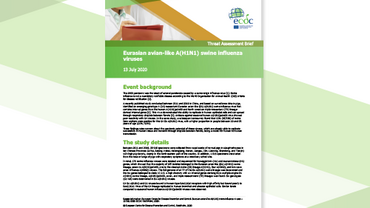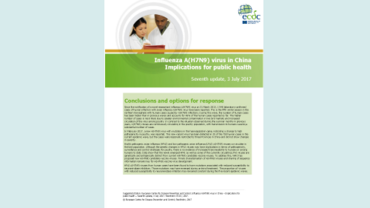Rapid risk assessment: Human infection with a novel avian influenza A(H7N9) virus, China - Third update
This updated risk assessment summarises all available information on the novel avian influenza A(H7N9) and assesses the situation as of 27 January 2014, focusing on new developments since the ECDC rapid risk assessments of 3 April 2013, 12 April 2013 and 8 May 2013. The document assesses the risk associated with the outbreak of avian influenza in China to public health in the EU/EEA and attempts to anticipate future developments (disease scenarios, availability of vaccination, human-to-human transmission).
Executive Summary
In recent weeks there has been a notable increase in the number of cases of avian influenza A(H7N9) being detected and reported in China. As of 27 January 2014, 251 cases of human infection with influenza A(H7N9) have been reported in total. Most cases have developed severe respiratory disease. Fifty-six patients have died, although final outcomes are not routinely reported after the initial notification.
As this has followed several months where only sporadic cases have been reported, 116 since October from nine Chinese provinces/municipalities and Taiwan, ECDC has updated its Rapid Risk Assessment on human infections of influenza A(H7N9) virus due to this increased number of cases.
While occasional human-to-human transmission in clusters of reported cases cannot be ruled out there is no indication of sustained human-to-human transmission.
The recent increase in cases may indicate an enlargement of the virus reservoir, an increase in the number of exposed individuals, enhanced transmissibility of the virus, a seasonal transmission pattern or a combination of these factors.
The most plausible underlying scenario is of a zoonotic avian influenza that is circulating in poultry in parts of south-eastern China. The severe nature of the disease and the genetic features of the virus present a threat to humans because of the human pandemic potential. The persistence of this virus in poultry represents a significant long-term threat either as a zoonosis or perhaps a pandemic virus. Both eventualities should be prepared for.
The updated Rapid Risk Assessment also contains updated information on A(H7N9) virology and vaccine development.







